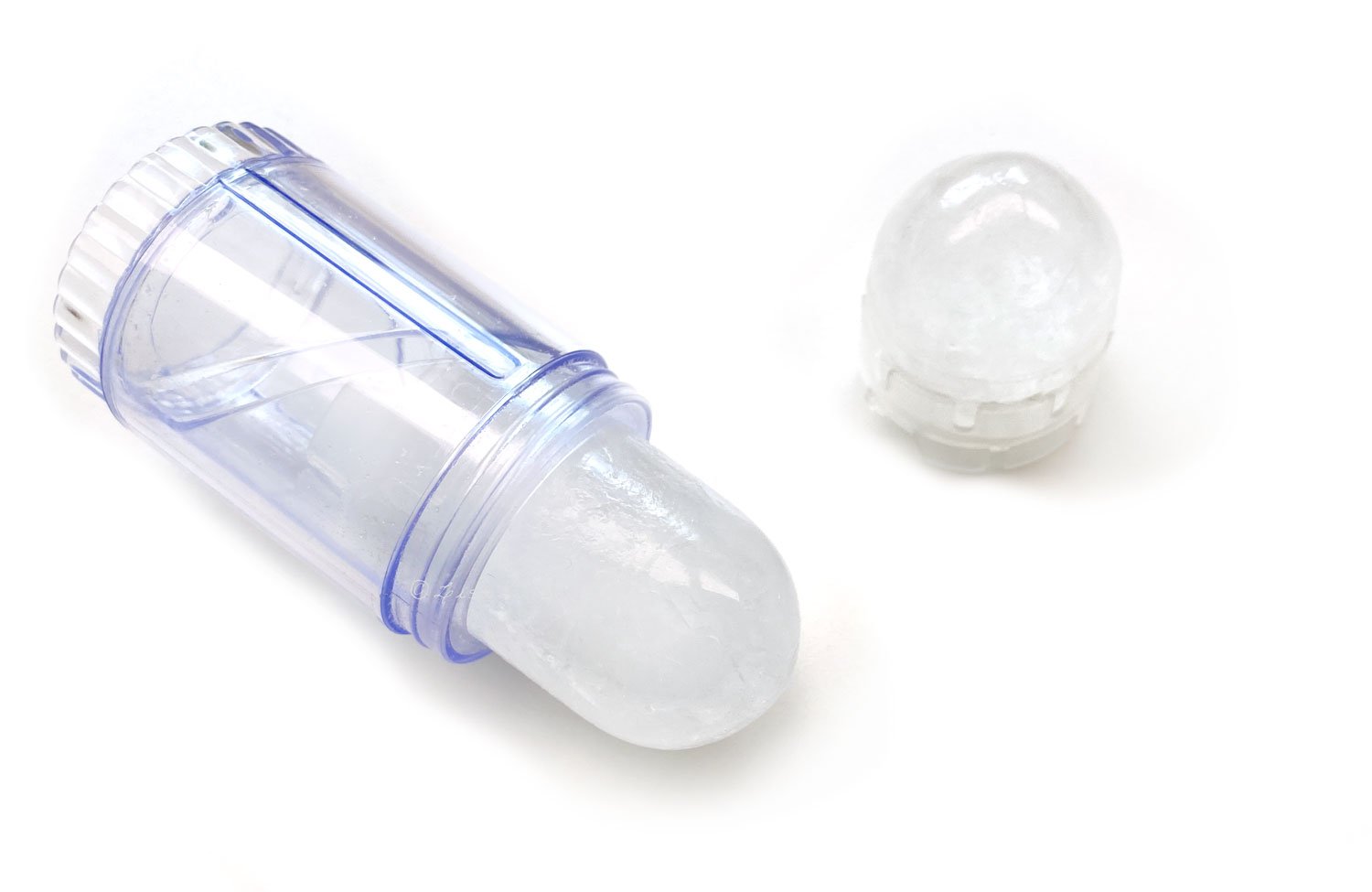Deodorant Part 3: About Potassium Alum
Lise
Today we're going to look at an ingredient that has been a staple in my stockroom (and many of my deodorant formulations) for several years. It can count itself among the few ingredients that have an easily pronounceable INCI name: Potassium alum.
It also has several common names:
Alum
Potassium alum
Potash alum
Potassium aluminium sulfate
Potassium alum is (perhaps understandably) sometimes confused with other ingredients.
What is Potassium Alum?
You have probably already seen potassium alum many times as it is shaped, packaged and sold as 'natural crystal deodorant'. Pictured at the top of this post are a couple of examples.
Briefly described, potassium alum is a naturally occurring chemical compound that develops when sulphide and potassium-bearing minerals come into contact with oxygen molecules. When this happens, potassium alum appears as encrustations/crystals.
While potassium alum can be found all over the planet, it is predominant in Europe, North America, and South America.
Potassium alum is also described as the double salt of aluminium and potassium.
Although it is naturally occurring, potassium alum can be man-made. From what I understand, you have to be a mineral-savvy person to be able to distinguish between a man-made and naturally occurring potassium alum crystal. The man-made crystals have a presence of aluminium hydroxide which gives them a slightly different opacity and may also make the man-made alum a mild skin irritant as compared to the naturally occurring substance.
Differentiating Between Aluminium, Aluminium Salts, and Potassium Aluminium Sulfate
Seeing so many mentions of aluminium can be enough to get some folks worried (more on aluminium and cosmetics in an upcoming post), but let's take a closer look.
Checking the CAS numbers of these can be helpful. These are unique identifying numbers that are assigned by the Chemical Abstracts Service.
If 2 ingredients happen to have the same CAS number (like in this example), they are chemically identical.
Aluminium
is the third most naturally abundant element/metal on the planet - mined from bauxite ore and used to make packaging, wires and many other things.
Aluminium CAS number: 7429-90-5
Aluminium Salts
such as aluminium chlorohydrates and/or aluminium chloride are commonly found in commercially made antiperspirants, as an adjuvant in vaccines, and as an antacid in some stomach treatment products.
Aluminium chlorohydrate CAS number: 12042-91-0
Aluminium chloride CAS number: 7446 70 0
Potassium Alum
is the double salt of aluminium and potassium and also known as crystal deodorant (with more uses listed below).
Potassium alum CAS number: 10043-67-1
Potassium alum is listed as GRAS (Generally Recognised as Safe) by the FDA.
Potassium Alum's Multiple Uses and Properties
Potassium alum is used in numerous industries, such as water-purification, dyes, and leather tanning.
It may also be sitting in your kitchen cupboard right now if you have happen to have baking powder in the house because potassium alum is the acidic component of some baking powders.
Potassium alum has a history of use as an astringent, and also boasts anti-sceptic properties.
If you happen to know someone who shaves 'the old fashioned way', you will probably find they have a small bar of 'shaving alum' at hand. Shaving alum is 100% potassium alum and a very effective styptic bar that stops bleeding from minor cuts.
Potassium Alum's Deodorising Abilities
When I started working with potassium alum, I combined it with other ingredients to create a 'cocktail of actives' for my deodorant formulations.
Over time, I discovered it functions quite well on its own and can provide all day deodorising action when applied with care (read: one single swipe doesn't do it, you have to wet the crystal and apply slowly).
Potassium alum is available in powder form from many cosmetics suppliers and is relatively easy to work with.
Next time we look at deodorants, we'll be looking at aluminium and antiperspirants.
More about Potassium alum
Patent for preparation method of potassium alum
How to Make Potash Alum (potassium alum)
Do Tell
Have you ever used a natural crystal deodorant? Did it work for you?
The books below (English and Spanish version) include 3 natural, self preserving deodorant formulations.




